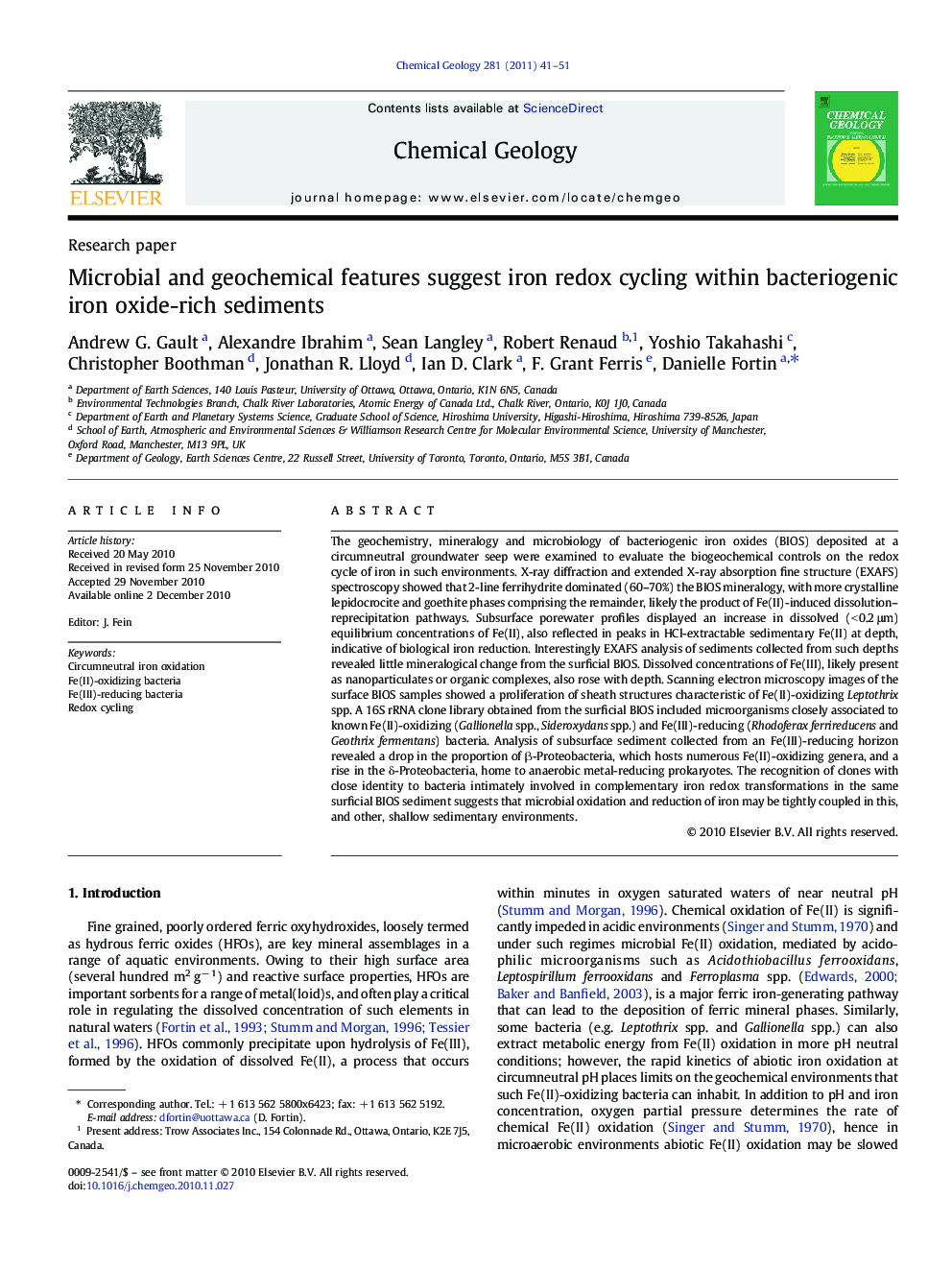| کد مقاله | کد نشریه | سال انتشار | مقاله انگلیسی | نسخه تمام متن |
|---|---|---|---|---|
| 6437030 | 1637674 | 2011 | 11 صفحه PDF | دانلود رایگان |

The geochemistry, mineralogy and microbiology of bacteriogenic iron oxides (BIOS) deposited at a circumneutral groundwater seep were examined to evaluate the biogeochemical controls on the redox cycle of iron in such environments. X-ray diffraction and extended X-ray absorption fine structure (EXAFS) spectroscopy showed that 2-line ferrihydrite dominated (60-70%) the BIOS mineralogy, with more crystalline lepidocrocite and goethite phases comprising the remainder, likely the product of Fe(II)-induced dissolution-reprecipitation pathways. Subsurface porewater profiles displayed an increase in dissolved (< 0.2 μm) equilibrium concentrations of Fe(II), also reflected in peaks in HCl-extractable sedimentary Fe(II) at depth, indicative of biological iron reduction. Interestingly EXAFS analysis of sediments collected from such depths revealed little mineralogical change from the surficial BIOS. Dissolved concentrations of Fe(III), likely present as nanoparticulates or organic complexes, also rose with depth. Scanning electron microscopy images of the surface BIOS samples showed a proliferation of sheath structures characteristic of Fe(II)-oxidizing Leptothrix spp. A 16S rRNA clone library obtained from the surficial BIOS included microorganisms closely associated to known Fe(II)-oxidizing (Gallionella spp., Sideroxydans spp.) and Fe(III)-reducing (Rhodoferax ferrireducens and Geothrix fermentans) bacteria. Analysis of subsurface sediment collected from an Fe(III)-reducing horizon revealed a drop in the proportion of β-Proteobacteria, which hosts numerous Fe(II)-oxidizing genera, and a rise in the δ-Proteobacteria, home to anaerobic metal-reducing prokaryotes. The recognition of clones with close identity to bacteria intimately involved in complementary iron redox transformations in the same surficial BIOS sediment suggests that microbial oxidation and reduction of iron may be tightly coupled in this, and other, shallow sedimentary environments.
Research HighlightsâºWe have examined the biogeochemistry of bacteriogenic iron oxides (BIOS) âºBIOS mineralogy shows minimal change between oxidizing and reducing sediment depths âºFe(II)-oxidizing and Fe(III)-reducing bacteria identified in surficial BIOS sediment âºClosely coupled microbial iron redox cycle exists in surface BIOS-rich sediments
Journal: Chemical Geology - Volume 281, Issues 1â2, 2 February 2011, Pages 41-51